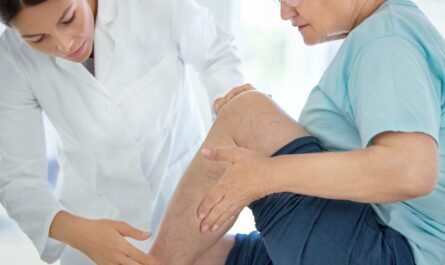A recent study published in Osteoporosis International has found that while the majority of women with osteoporosis want to know their fracture risk, only half have received this information from their healthcare providers. The study, conducted by researchers at Maastricht University in the Netherlands, highlights the need for improved communication between healthcare professionals and patients regarding osteoporosis and fracture prevention.
The study, which included 332 female participants, aimed to assess patients’ preferences regarding fracture risk communication. The researchers found that participants placed great importance on receiving information about their fracture risk, with a mean importance rating of 6.2 out of 7 on a Likert scale. However, only 56% of participants had already received such information from their healthcare providers.
Interestingly, when it came to the presentation of fracture risk information, participants expressed a preference for a visual presentation using a traffic-light type of colored graph to represent their fracture risk probability. This visual approach was favored over verbal or written presentations of risk. Additionally, almost all participants considered it important to discuss their fracture risk and the consequences of fractures with their healthcare professionals.
The authors of the study emphasize the significant communication gap that exists between healthcare professionals and patients when it comes to discussing osteoporosis fracture risk. They argue that improving communication in this area will raise awareness about osteoporosis, help individuals understand the consequences of fractures, and emphasize the importance of fracture prevention. Ultimately, this improved communication could lead to an enhanced quality of life for those at risk of osteoporosis.
It is worth noting that several authors involved in the study disclosed financial ties to the pharmaceutical industry, and one author is the founder of FRAX, a tool commonly used to assess fracture risk.
Osteoporosis is a condition characterized by low bone mass and structural deterioration of bone tissue, leading to an increased risk of fractures, particularly in older individuals and postmenopausal women. Fractures, especially those of the hip and spine, can have severe consequences, including disability and reduced quality of life. It is crucial for healthcare providers to inform patients about their fracture risk, as early intervention and appropriate management can help reduce the likelihood of fractures and their impact on individuals’ lives.
The findings of this study underscore the importance of effective communication between healthcare professionals and patients in managing osteoporosis. By providing individuals with accurate and personalized information about their fracture risk, healthcare providers can empower patients to take proactive steps in preventing fractures and maintaining their bone health.
*Note:
- Source: Coherent Market Insights, Public sources, Desk research
- We have leveraged AI tools to mine information and compile it



